Abstract
An attempt was made to vary systematically the behavior of two elementary school teachers to determine the effects on classroom behavior of Rules, Ignoring Inappropriate Behaviors, and showing Approval for Appropriate Behavior. Behaviors of two children in one class and one child in the other class were recorded by observers, as were samples of the teachers' behavior. Following baseline recordings, Rules, Ignoring, and Approval conditions were introduced one at a time. In one class a reversal of conditions was carried out. The main conclusions were that: (a) Rules alone exerted little effect on classroom behavior, (b) Ignoring Inappropriate Behavior and showing Approval for Appropriate Behavior (in combination) were very effective in achieving better classroom behavior, and (c) showing Approval for Appropriate Behaviors is probably the key to effective classroom management.
Full text
PDF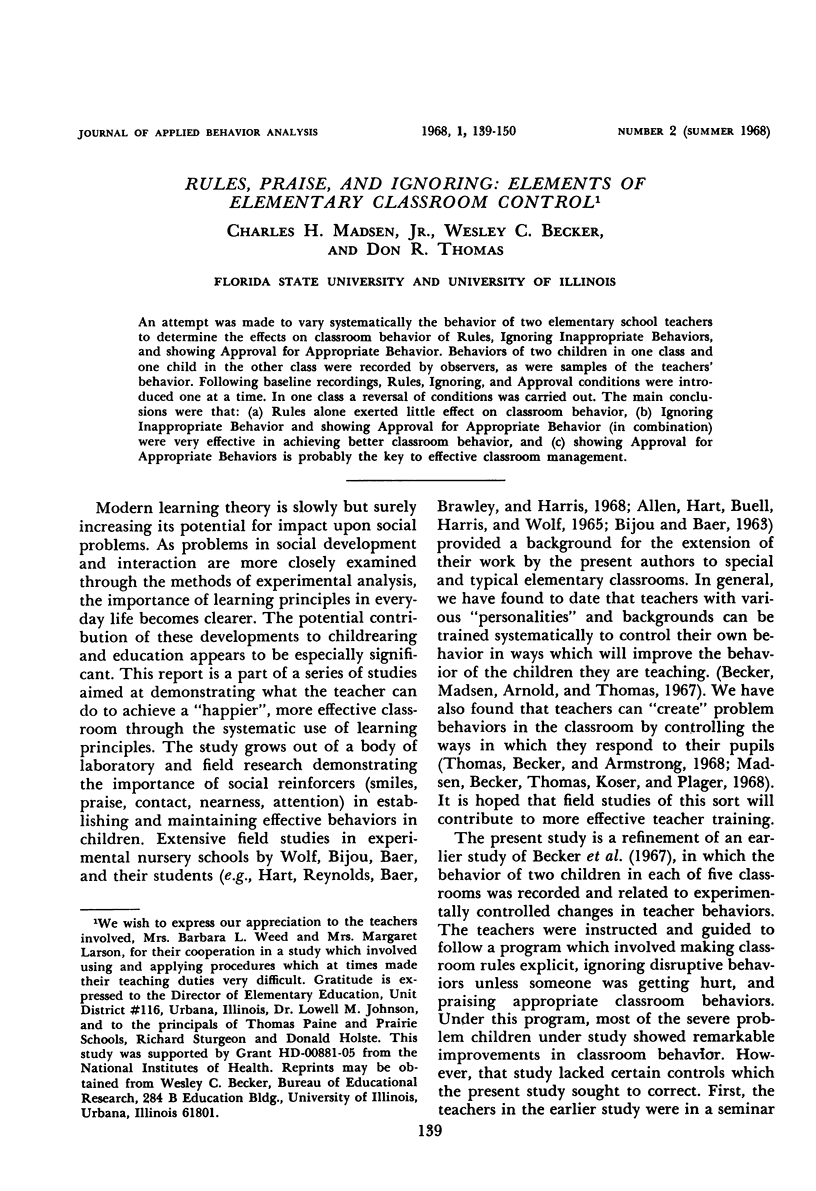
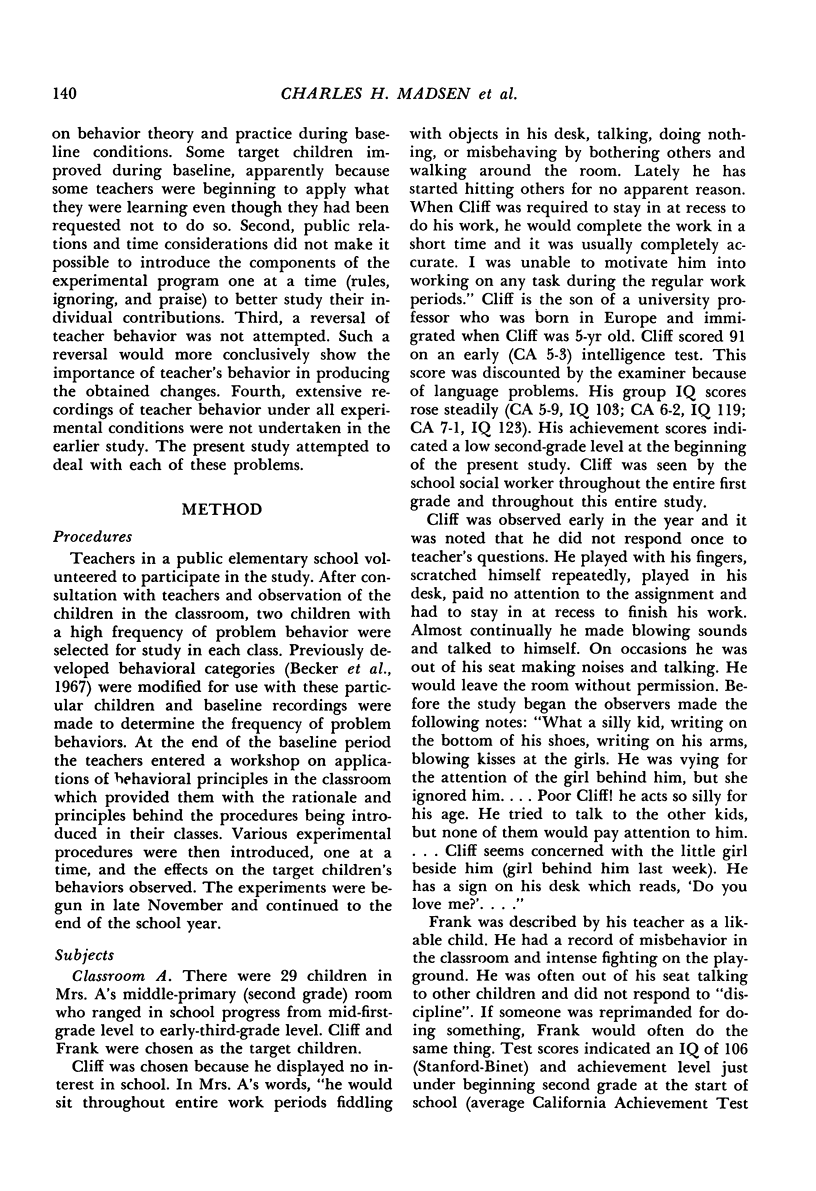
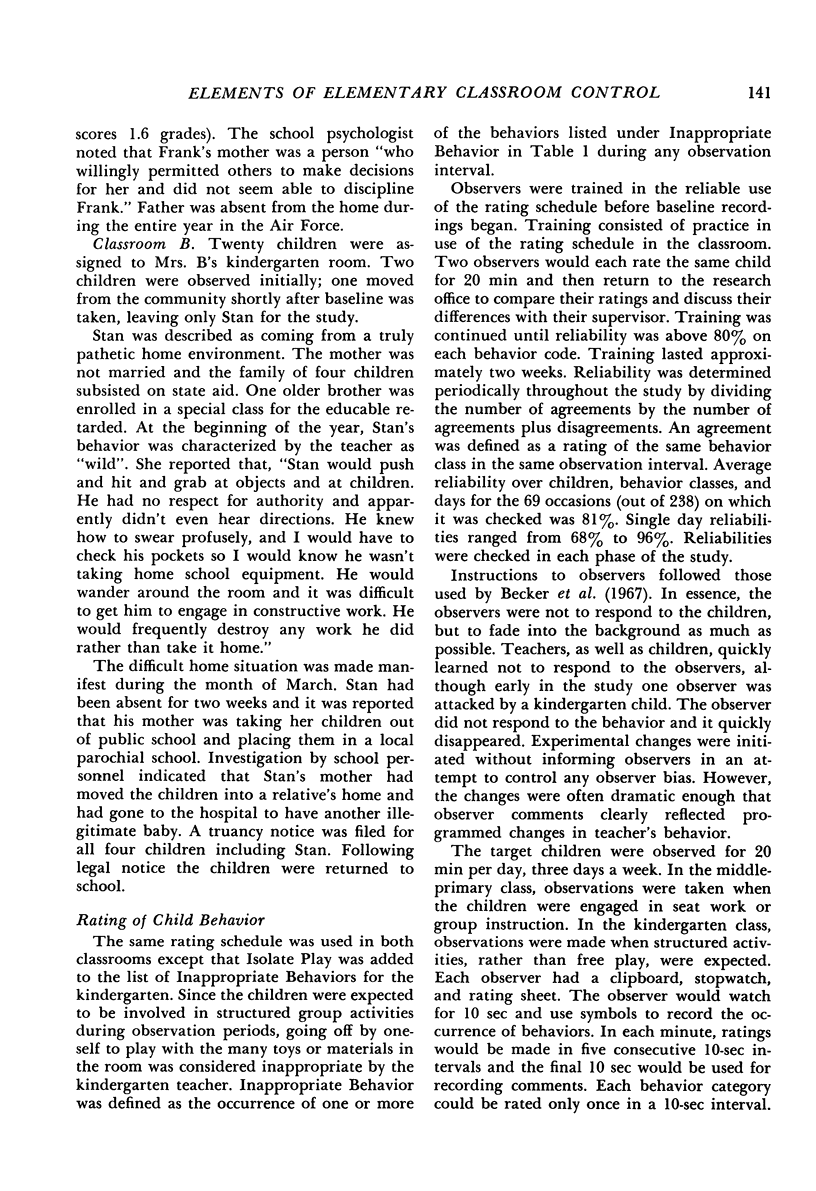
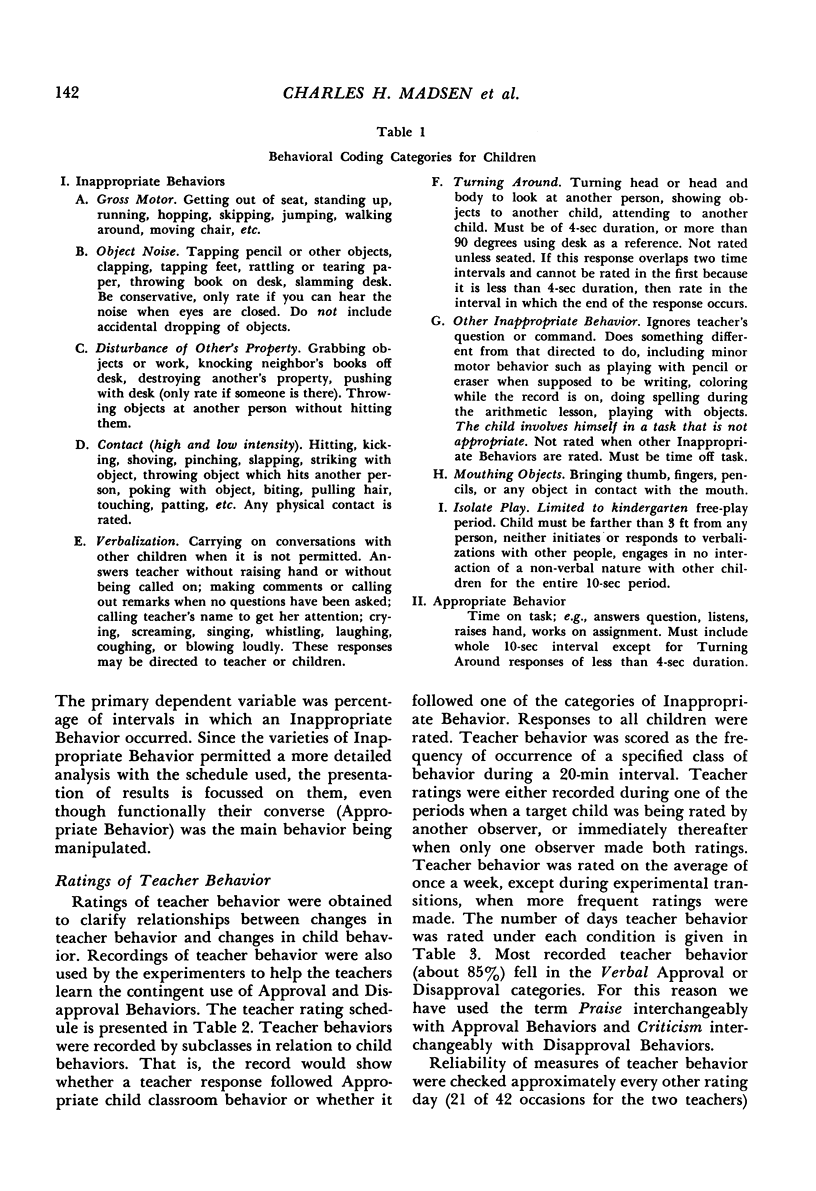
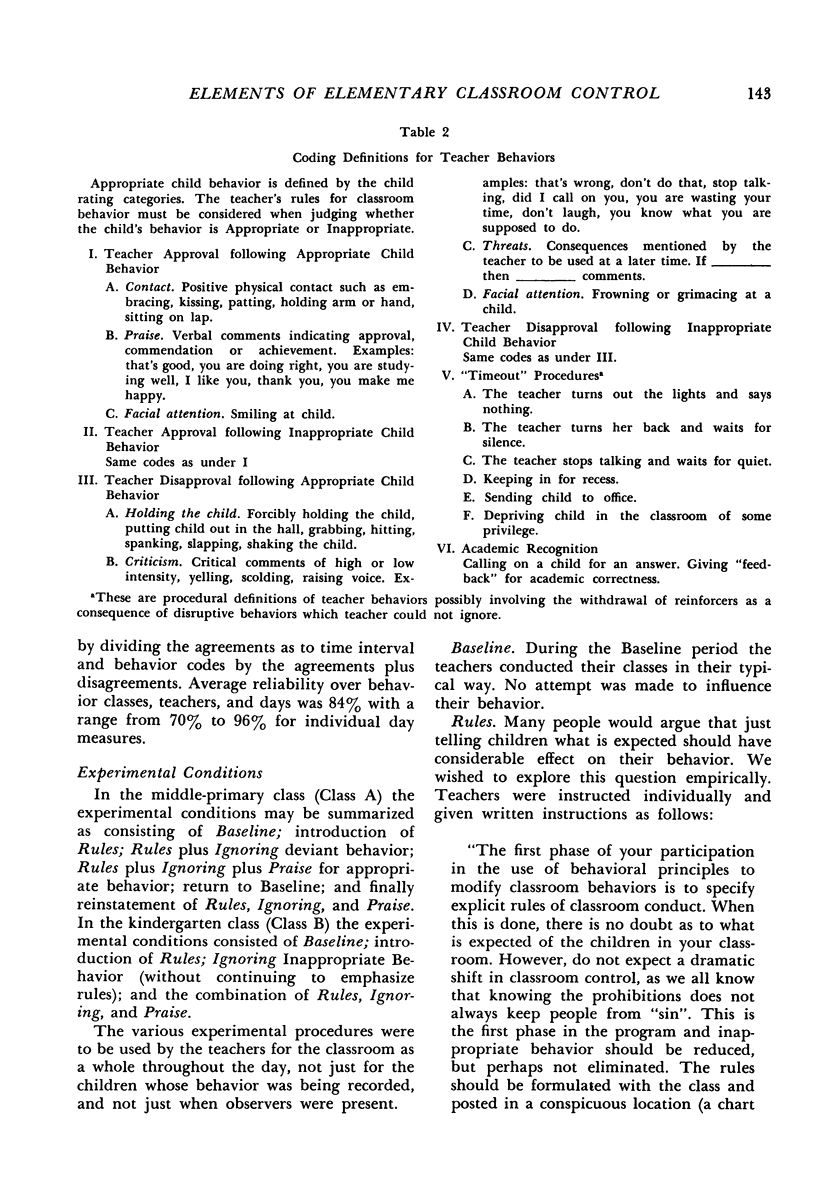
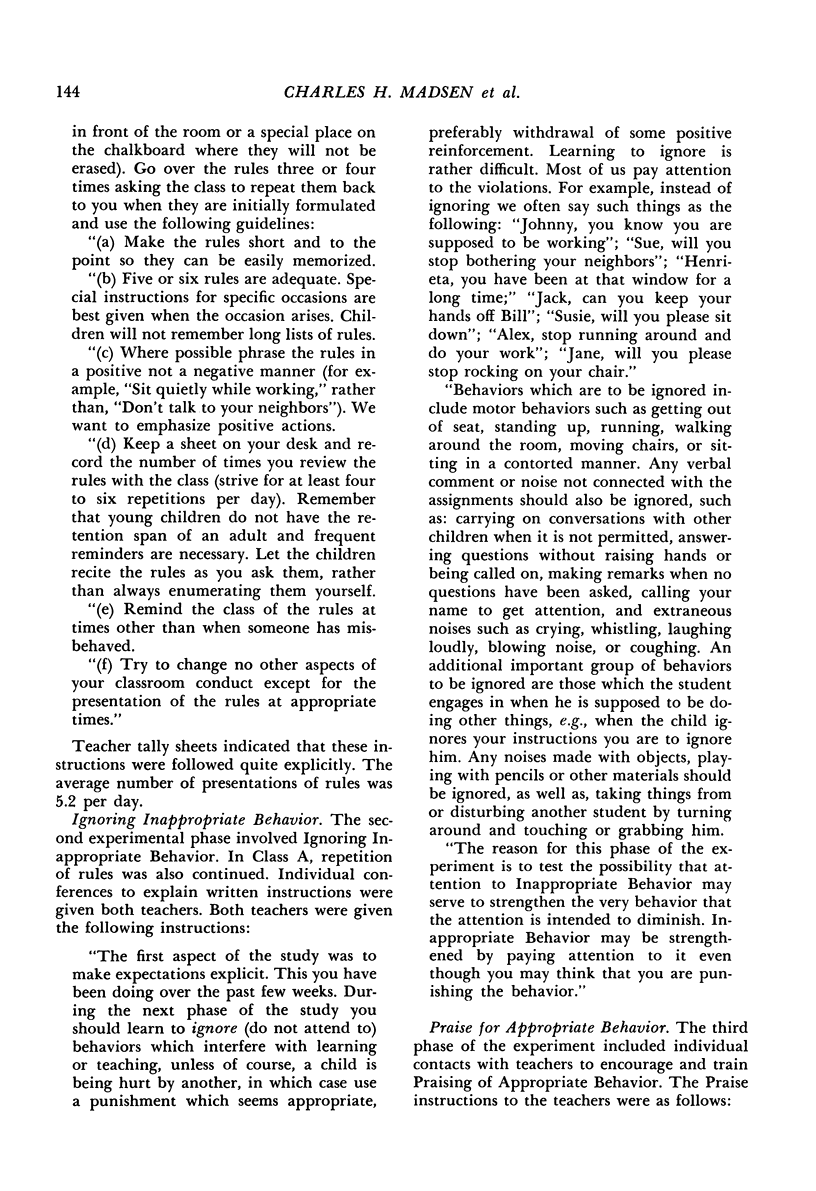
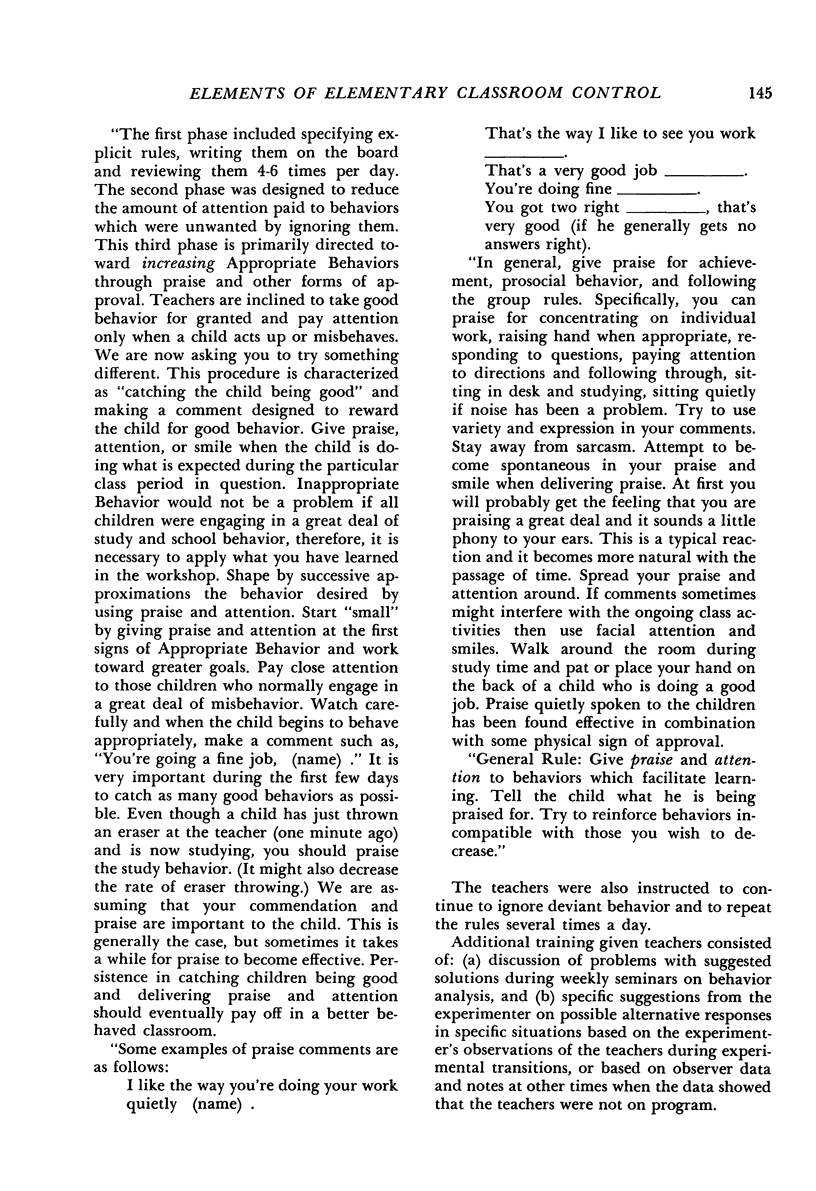
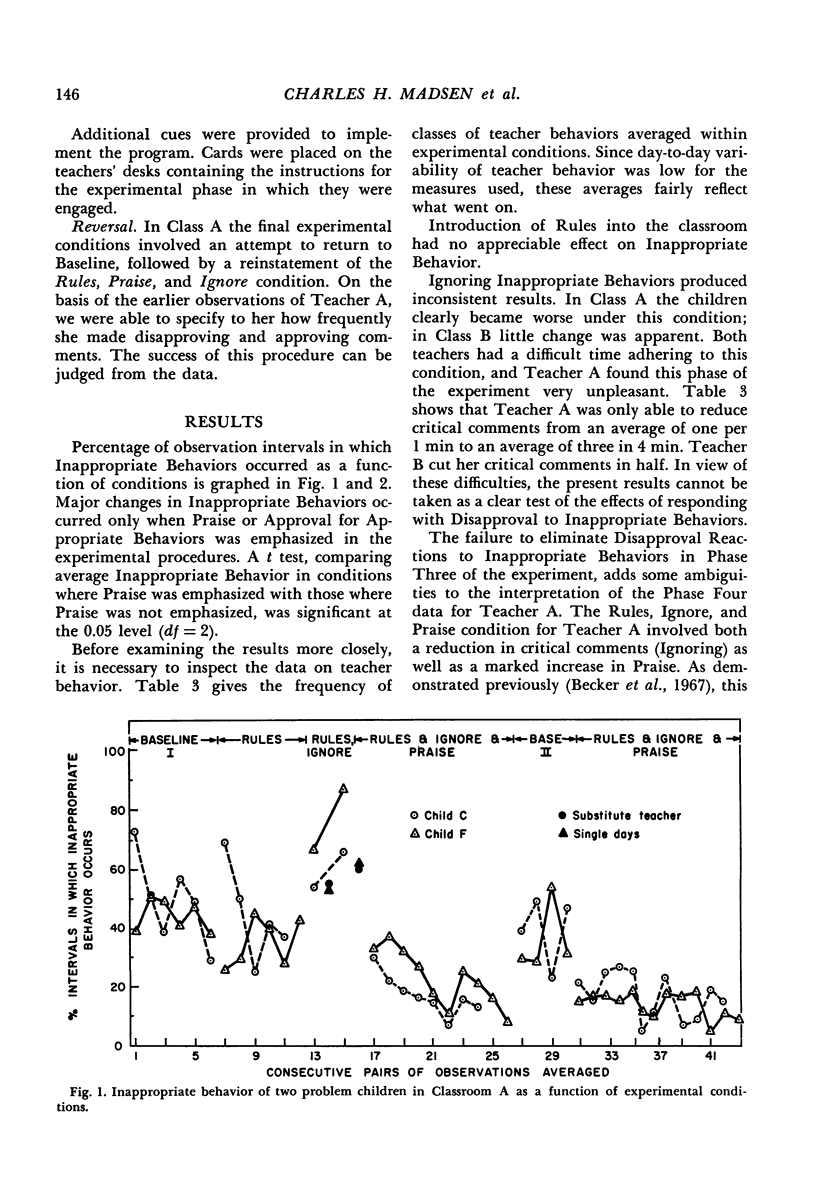
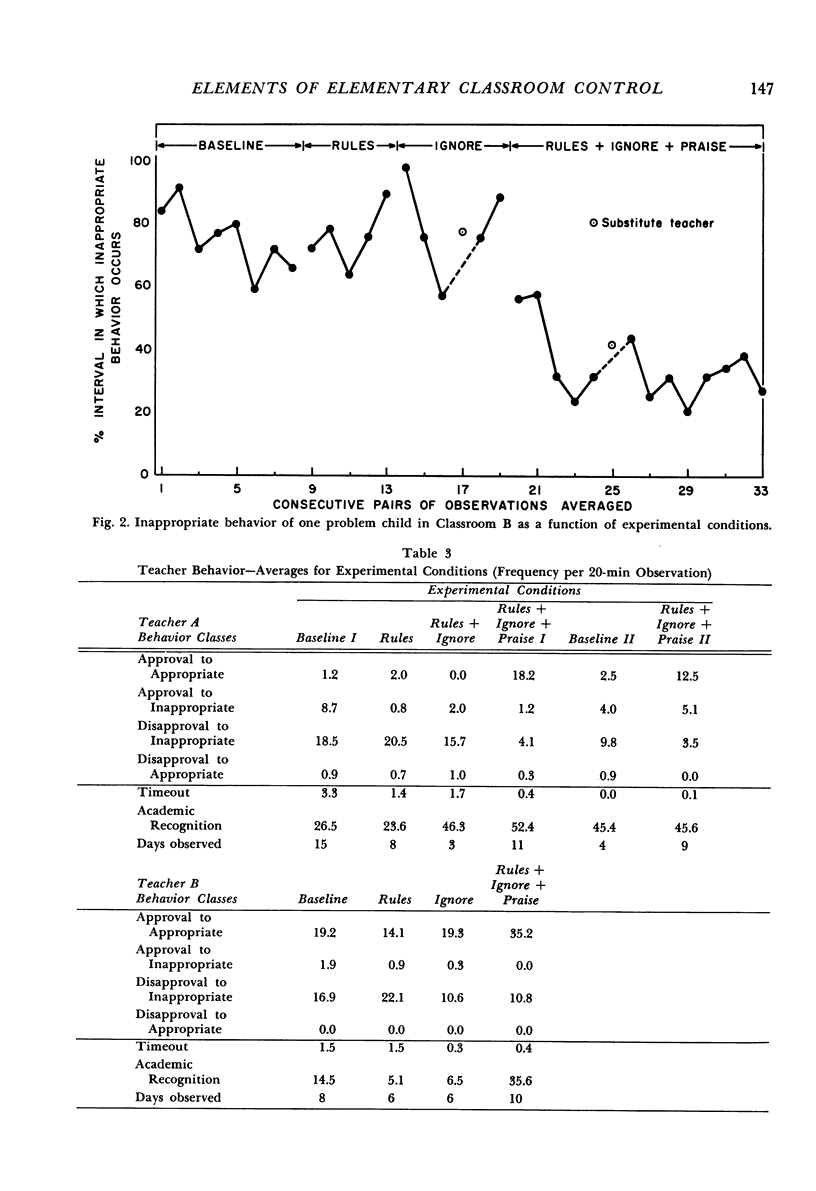
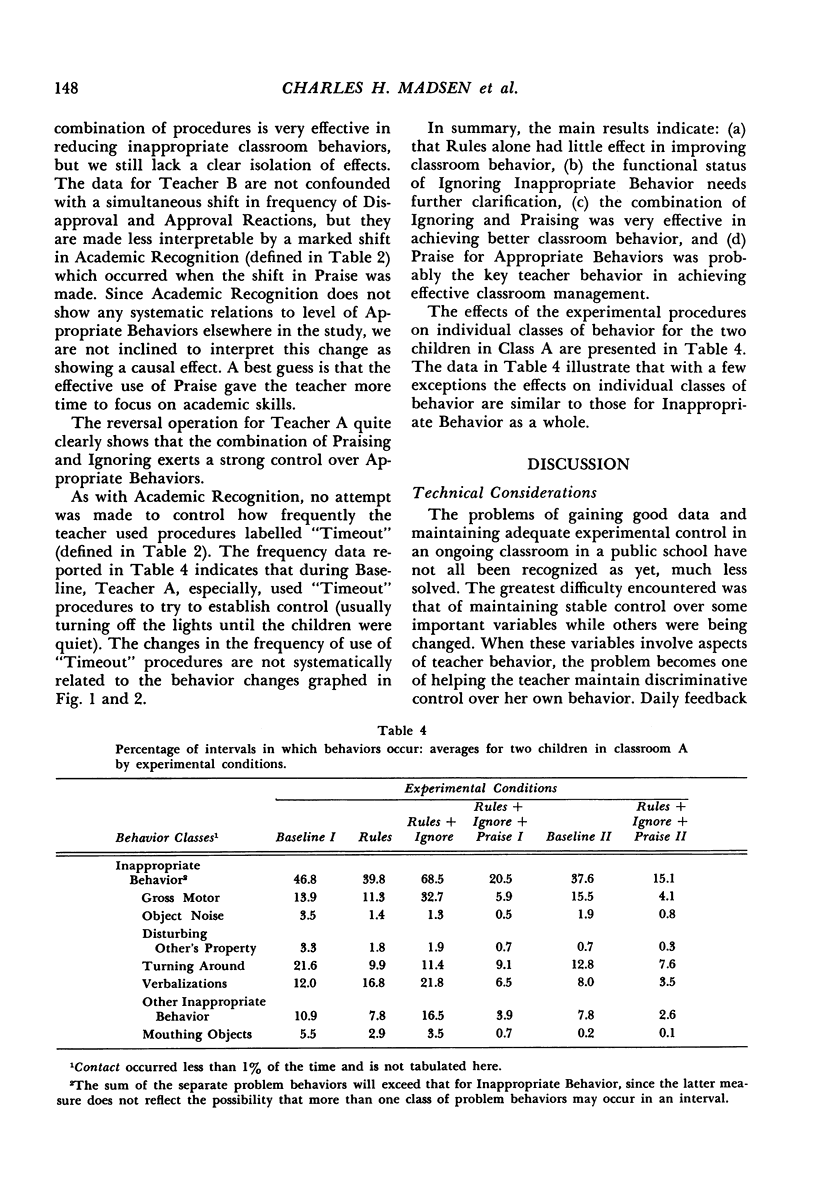
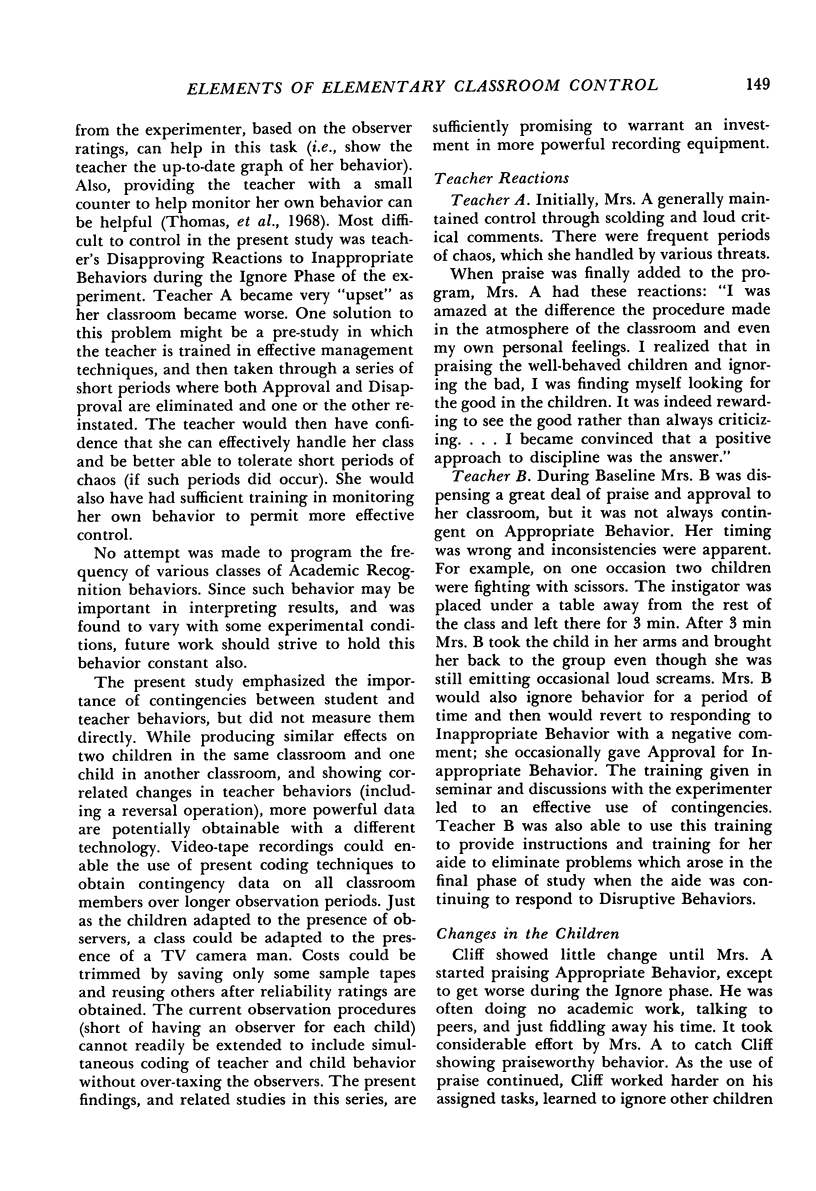
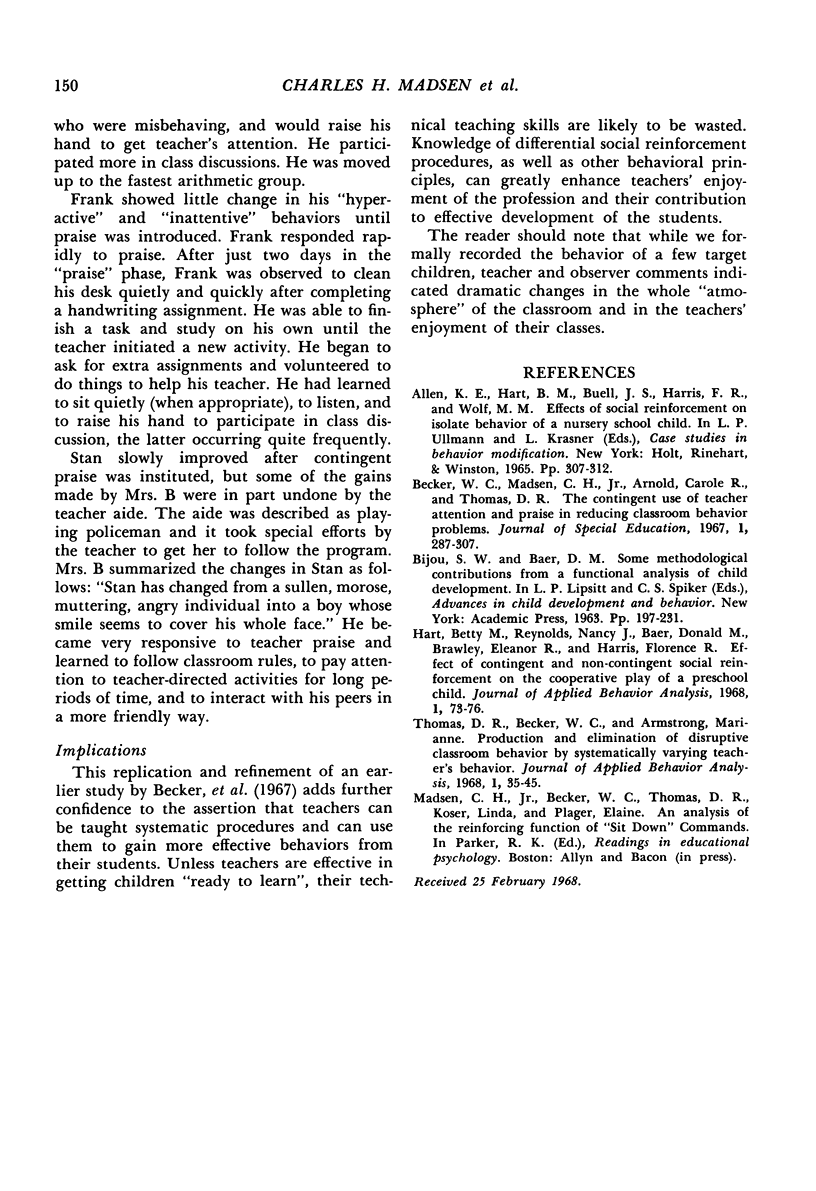
Selected References
These references are in PubMed. This may not be the complete list of references from this article.
- Hart B. M., Reynolds N. J., Baer D. M., Brawley E. R., Harris F. R. Effect of contingent and non-contingent social reinforcement on the cooperative play of a preschool child. J Appl Behav Anal. 1968 Spring;1(1):73–76. doi: 10.1901/jaba.1968.1-73. [DOI] [PMC free article] [PubMed] [Google Scholar]
- Thomas D. R., Becker W. C., Armstrong M. Production and elimination of disruptive classroom behavior by systematically varying teacher's behavior. J Appl Behav Anal. 1968 Spring;1(1):35–45. doi: 10.1901/jaba.1968.1-35. [DOI] [PMC free article] [PubMed] [Google Scholar]


